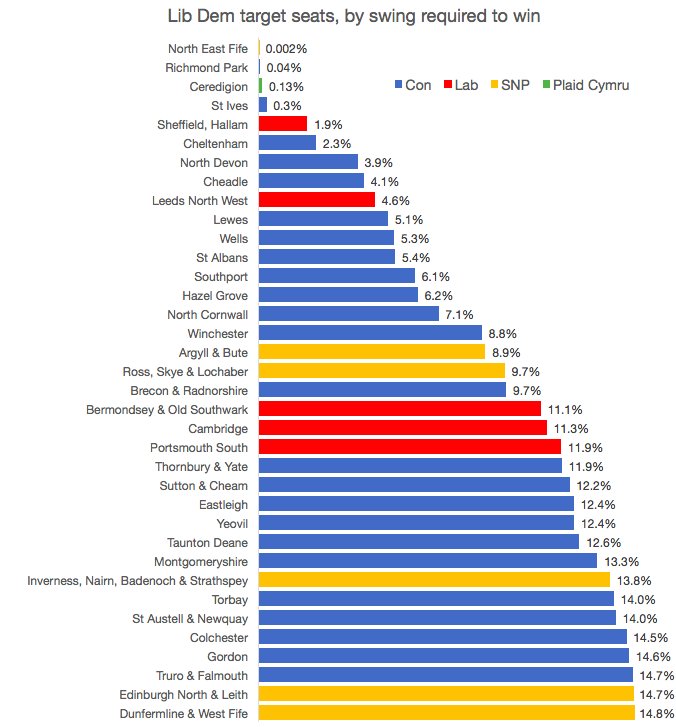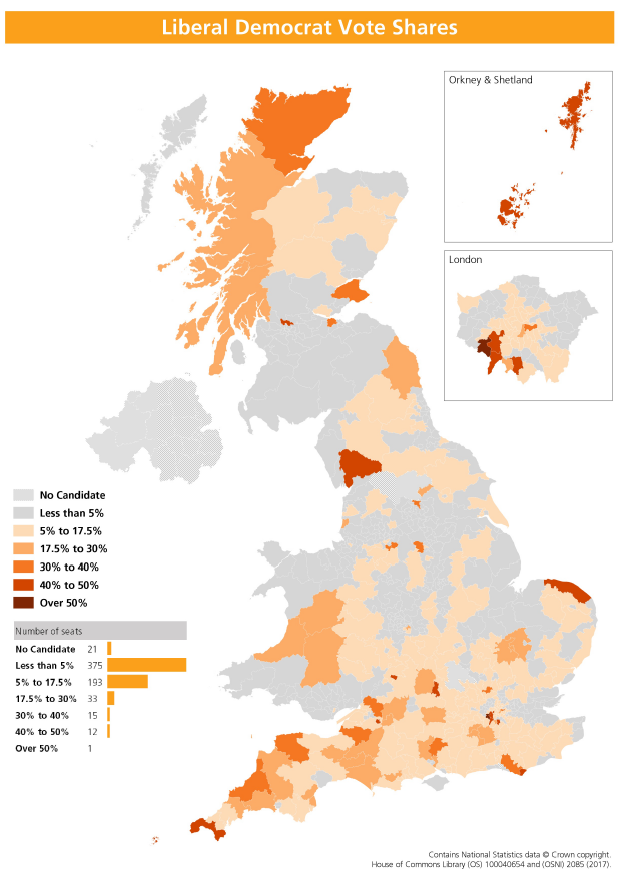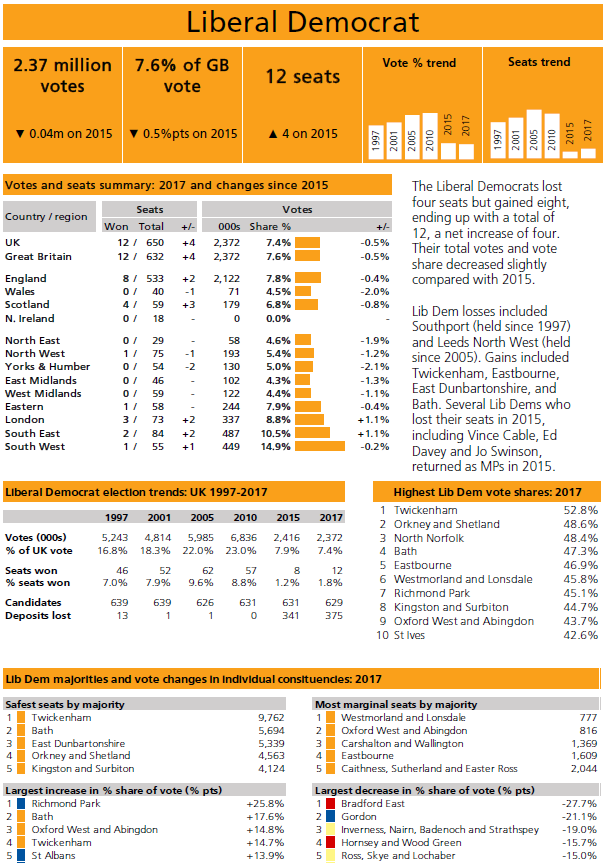The 36 closest Liberal Democrat misses in the 2017 general election
A listing of seats purely by swing to win is not the same as a listing of future target seats as other factors come into account too. It does however give a good overall picture of the territory over which the next election will be contested.
So courtesy of Phil Rodgers on Twitter, this table is worth some study:

Given that the Conservatives and (in Scotland) the SNP are in government, and it is usually easier to win seats off the government than off other opposition parties, the predominance of Conservative and SNP seats in this list is helpful.
Also worth study are these two extracts from the House of Commons Library’s report into the 2017 election (in full below), especially the way the map of Lib Dem support does not obviously match up with the map of Remain support across the country – a sign of how the Lib Dem pro-European message did not work or a sign that the pro-European message was the wrong one? That’ll be debated I’m sure during the forthcoming leadership contest, especially if Norman Lamb (a rebel on the Article 50 vote in Parliament) is one of the runners.


I think the one that really hurts here is Olney in Richmond Park. Had less than 1% of Labour voters held their nose and voted against the awful Goldsmith, we would’ve held the seat.
Remember that council election where we won by drawing straws a couple of months ago? Karma’s a bitch.
I’m feeling really guilty about Richmond – I hand-addressed a couple-dozen envelopes, and my handwriting is so bad that could well have tipped the balance for people from voting Lib Dem to voting Tory. I wonder if they could have afforded a better printer if that would have made a difference. With margins that close there’s a lot of second guessing that could be done.
Nethertheless, onwards and upwards. We gained 4 seats on 2015, even with some disappointing losses. It looks from this that the key relies in attracting those turned off by the tory lurch to the right. The ‘youth’ vote have gone for Corbyn’s unfeasible policies, trying to get them back feels like a losing battle. Instead make our case for a Liberal Britain, one without the extremism of the Tory/DUPs, but without the state ownership of Labour. Those that supported Blair and Cameron would feel far at home with the Lib Dems.
On the remain vote not matching up with our vote Lord Ashcroft has us doing 3.5x better among remainers than leavers 14% against 4%. This is reinforced and I haven’t looked in detail at the figures at the individual seats where we did well that are pro-remain and have a history of lib dem representation – SW London, OXWAB, Bath, and Winchester. Whether it was the right strategy or well executed is a different matter. But I suspect it would have been one that would have grown in popularity if the election had been later. Obviously we did double our vote amongst remainers but at the expense of our leave vote. We might have just had a general squeeze down to 4% without a clear second referendum policy.
Vote shares are not a very good indicator, as it all depends how many rivals there were.
The morale of the story is always is to carry on knocking up until 10pm!!!! You never know!